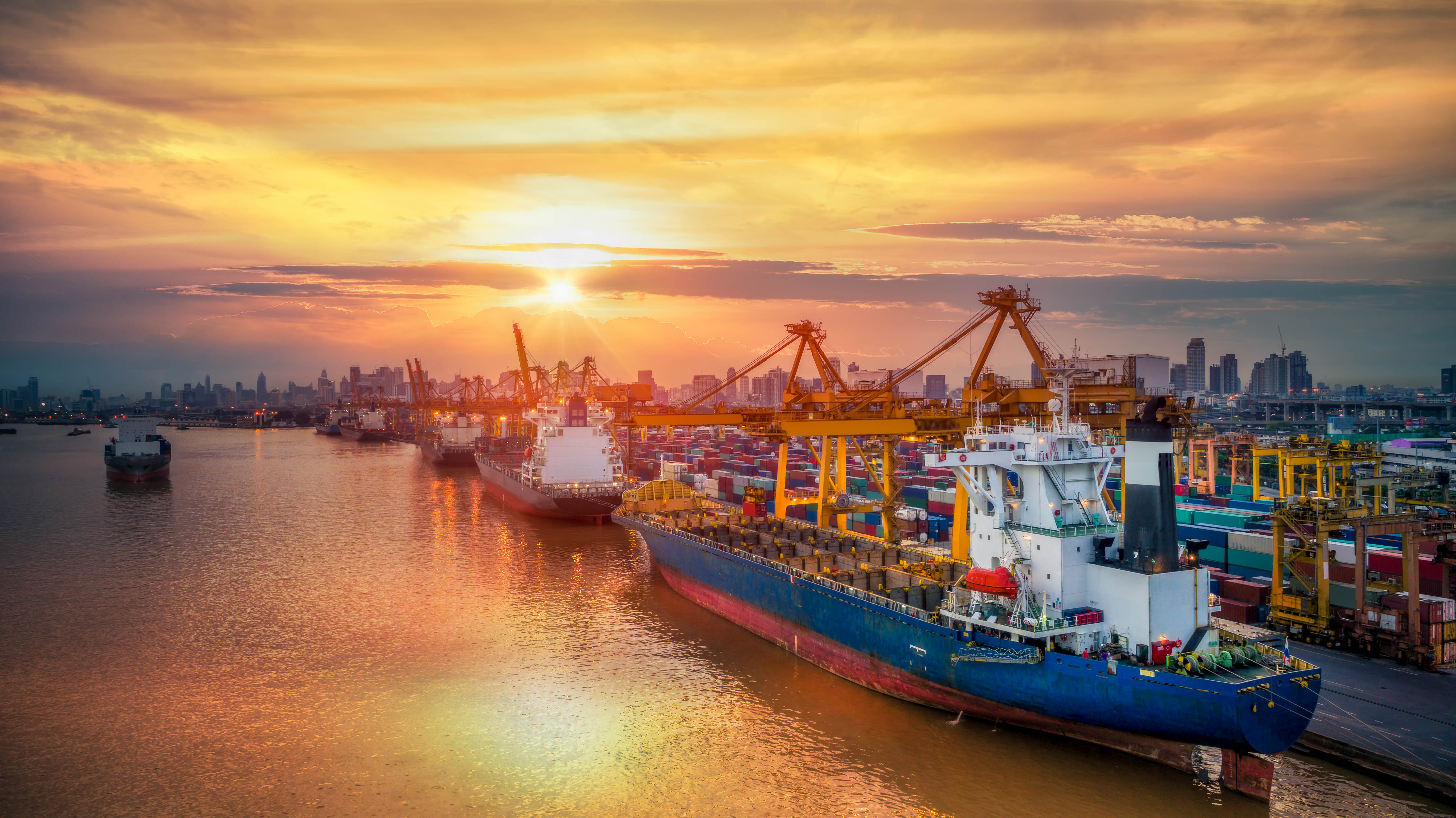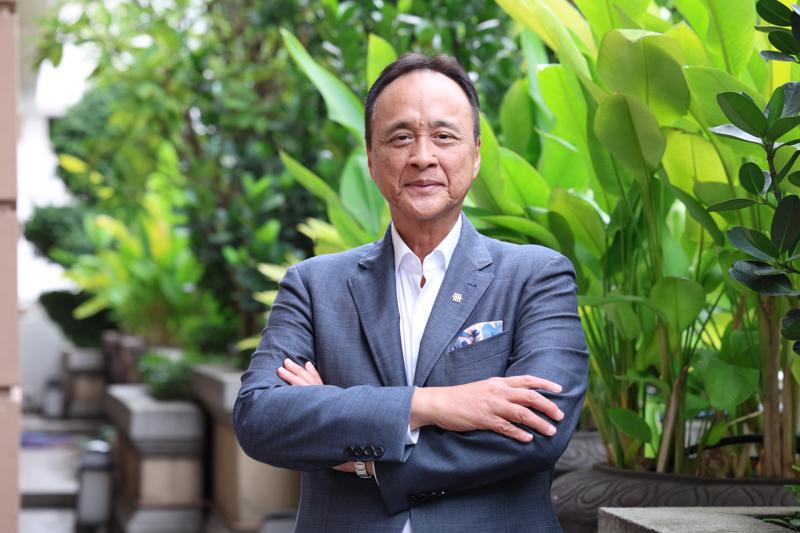Can you share your perspective on the current situation with trade and the supply chain in the ASEAN region, particularly as countries continue to recover from the pandemic and face global economic headwinds?
I would say that the world has actually entered a new era of globalization, driven by two clear factors in the global supply chain. First, geopolitical tensions have resulted in economic competition between the West and China. And second, the effect of supply chain disruptions caused by conflicts and the Covid-19 pandemic. Due to these two factors, I see ASEAN returning as a potential “Asian Tiger”, reminiscent of the 1980s. There is now significant discussion about the “China 1” strategy because of the factors highlighted, and it is clear that new investments, factories, and production are increasingly being established in ASEAN.

"UOB made a strategic decision to differentiate itself by focusing on connectivity - both in terms of facilitating FDI and enhancing trade flows between ASEAN and other regions."
Mr. Frederick Chin, Head of Group Wholesale Banking and Markets at UOB.
Vietnam stands out as the main beneficiary of such strategies, and is likely the leading recipient in terms of FDI and trade. It attracted $23 billion in foreign investments in 2023, as announced by various investors, and total trade value reached $683 billion. These impressive numbers are backed by sector-specific investments: in the north of Vietnam, for instance, the electronics sector has grown rapidly. Today, Vietnam produces Apple products and significant product volumes for Samsung, which was not happening a decade ago.
In textiles, many companies have shifted their production to Vietnam, and the country also excels in furniture manufacturing, with a focus on sustainable materials for exports to Europe and the US.
In the country’s south, there is a broader-based economy with more consumer products than electronics, which are predominantly concentrated to the north of the country. This trend in electronics investment is echoed across ASEAN: Thailand is attracting investments in electric vehicles and electrical consumer products, while Malaysia and Singapore are seeing growth in the semiconductor industry. Thailand also manufactures Apple products, highlighting the region’s diversified growth.
Post-pandemic, we have witnessed a surge in investments, many of which were already underway before the crisis. The key question now is whether these investments can be sustained. I believe they can, for several reasons. First, ASEAN enjoys a relatively stable political environment compared to other regions. And second, ASEAN’s population is still growing, with a rapid increase in middle-income households.
Moreover, projections suggest ASEAN’s GDP will grow from $3.6 trillion today to $4.2 trillion by 2030, positioning it as the world’s fourth-largest economic bloc. These factors make ASEAN an attractive destination not only for production but also as a potential domestic market. However, ASEAN must remain united as an economic bloc and avoid fragmentation.
What opportunities and challenges do businesses in ASEAN as well as in Vietnam face amid these global supply chain shifts?
The opportunities are clear, ASEAN countries have a young and competitive workforce, and relatively good infrastructure, while there is still room for further infrastructure investments. If anything has become a bottleneck due to rapid investments, it is infrastructure, meaning that ports are too congested and highways to ports are not wide enough. Some of these challenges may resurface if investment outpaces government projections. For example, Ho Chi Minh City has significant plans to expand its ports and highways to ensure smoother logistics for transporting goods. Therefore, more investment will likely be directed toward infrastructure to sustain the continuous flow of investment into the region.
What strategies has UOB implemented to leverage trade flows between China and ASEAN, creating added value for businesses in the region, including Vietnam?
UOB made a strategic decision to differentiate itself by focusing on connectivity - both in terms of facilitating FDI and enhancing trade flows between ASEAN and other regions. ASEAN attracts $200-300 billion in FDI annually, and the total trade value across the region exceeds $2 trillion. Trade between ASEAN and China alone amounts to some $800-900 billion, while ASEAN’s trade with the US and Europe is valued at approximately $500 billion and $400 billion, respectively.
We are seeing the same patterns today that characterized ASEAN’s role as a production base for the West before China’s rise. With the current geopolitical landscape, China’s share of global production is shifting to ASEAN, benefiting countries like Vietnam, which is seeing significant investment from China. Factories in Vietnam are now producing goods for export to the US and Europe. Due to its proximity and logistical advantages, it is the primary beneficiary of this “China 1” strategy.
In the context of increasingly complex global trade, how does UOB support ASEAN businesses, particularly those in Vietnam, in accessing and developing new markets and optimizing supply chains?
UOB has developed a three-pronged approach to supporting businesses in the region. The first is FDI Advisory. We have established FDI Advisory units in ten countries, assisting our clients in navigating overseas investments. We collaborate with government agencies to streamline approvals and provide a one-stop service for investors. We also help businesses find local partners and offer financial solutions tailored to their needs. Over the past decade, we have supported more than 4,500 companies in their overseas investments, especially within ASEAN.
The second is our supply chain management platform. We have invested in a digital platform that connects buyers and sellers, enabling efficient procurement and financing. This platform also minimizes the risk of fraud in trade finance and is available across all ASEAN economies. It allows businesses to manage their entire supply chain ecosystem more effectively, from suppliers to distributors.
And finally, government support. ASEAN governments play a pivotal role in shaping the region’s trade landscape. Through initiatives like the Regional Comprehensive Economic Partnership (RCEP) and various free trade agreements (FTAs), ASEAN economies benefit from reduced tariffs and more favorable trade terms. Vietnam, in particular, has signed numerous FTAs, which allow companies to export to multiple markets under preferential terms. This strengthens ASEAN’s position as a trade hub, connecting it to the US, Europe, China, and new markets like Mexico and Australia.
What is your outlook on ASEAN’s economic trajectory over the next three to five years, particularly for Vietnam? What factors will be most decisive in shaping this growth?
ASEAN is projected to record annual growth of around 5 per cent, aiming for $4.2 trillion by 2030. I see significant opportunities, especially in Vietnam, when examining its export-oriented economy and domestic economy.
In its export economy, increased FDI will boost production, leading to higher exports and creating more jobs, which in turn will raise incomes. This income growth will enhance domestic consumption, benefiting the banking sector through a multiplier effect. Additionally, the government will need to invest in infrastructure, such as ports and highways, to support this growth and transition to a new economy with a focus on renewable energy to achieve net-zero emissions. These infrastructure investments will attract further investment and drive economic progress.
Vietnam is already among the fastest-growing economies in ASEAN, with a target of 6.5 – 7 per cent growth this year. Given its young population and increasing investments, its economy is expanding, and Vietnam is well-positioned to meet its goals. China has experienced over 10 per cent growth for decades, so there is no reason why Vietnam can’t follow a similar trajectory. Vietnam stands out in Southeast Asia for its youthful, hardworking population, offering tremendous opportunities.
Similarly, ASEAN is emerging as a key player in the digital and green economies and is becoming a significant global production base. As China shifts away from this role, ASEAN, including Vietnam, is stepping in to fill the gap. Overall, I am very excited about the opportunities in both ASEAN and Vietnam.









 Google translate
Google translate